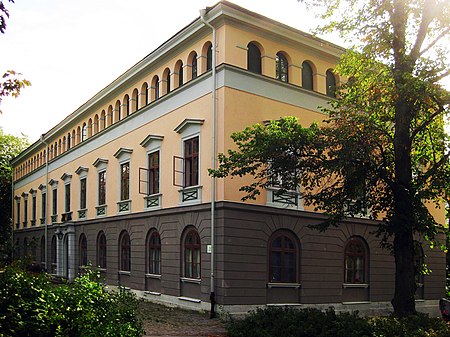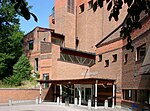Experimentalfältet
Agriculture in SwedenForestry in SwedenListed buildings in StockholmStockholm UniversityStockholm stubs ... and 1 more
Swedish building and structure stubs

Experimentalfältet ("the field for experiments") was an area in Frescati in northern Stockholm that was used by the Royal Swedish Academy of Agriculture and Forestry from the early 19th Century until the 1960s. In the 1960s its mission was changed, when the new campus of Stockholm University was installed on the fields. The former Roslagsbanan railway station Universitetet used to be called Experimentalfältet but changed its name when the university had been established there. The activities of the Academy of Agriculture and Forestry have been transferred to an area in Ultuna outside Uppsala.
Excerpt from the Wikipedia article Experimentalfältet (License: CC BY-SA 3.0, Authors, Images).Experimentalfältet
Svante Arrhenius väg, Stockholm Norra Djurgården (Östermalms stadsdelsområde)
Geographical coordinates (GPS) Address Website Nearby Places Show on map
Geographical coordinates (GPS)
| Latitude | Longitude |
|---|---|
| N 59.363333333333 ° | E 18.059722222222 ° |
Address
Stockholms universitet
Svante Arrhenius väg
114 17 Stockholm, Norra Djurgården (Östermalms stadsdelsområde)
Sweden
Open on Google Maps









